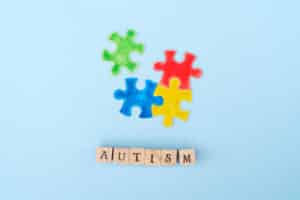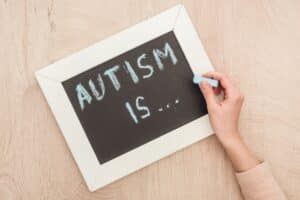Borderline Personality Disorder vs. Autism
- Updated:

Understanding the differences between Borderline Personality Disorder (BPD) and Autism Spectrum Disorder (ASD) is crucial for accurate diagnosis and effective treatment. Both disorders significantly impact social interactions, emotional responses, and overall mental health, but they have distinct origins, symptoms, and treatment pathways.
BPD is primarily a disorder of emotion regulation, characterized by hypersensitivity to emotional stimuli and intense episodes of anger, depression, and anxiety. These symptoms often lead to impulsive actions and unstable relationships. According to the National Alliance on Mental Illness, approximately 1.4% of adults in the U.S. are affected by BPD. ASD is a developmental disorder that manifests in early childhood and is characterized by difficulties in social communication, restrictive interests, and repetitive behaviors. The Centers for Disease Control and Prevention (CDC) reports that ASD affects about 1 in 44 children in the United States.
At Acera Health, distinguishing between BPD and ASD is essential for providing targeted treatment. For BPD, therapies like Dialectical Behavior Therapy (DBT) focus on improving emotional regulation. For ASD, treatment may involve behavioral interventions and communication therapies tailored to help individuals manage symptoms and enhance their quality of life. Through specialized programs in both residential and outpatient settings, Acera Health supports individuals with BPD or ASD in leading more stable and fulfilling lives.
What is Borderline Personality Disorder (BPD)?
Borderline Personality Disorder (BPD) is a complex mental health disorder characterized by significant emotional instability that affects mood, behavior, self-image, and overall functioning. This disorder typically results in intense episodes of anger, depression, and anxiety, which can last for a few hours or up to several days. In terms of treatment outcomes, research highlights that with appropriate treatment, people diagnosed with BPD show significant and sustained improvements. The study suggests that many patients experience a considerable reduction in symptom severity and improved social functioning within a year of starting treatment.
Individuals with BPD often struggle with maintaining relationships due to their profound fear of abandonment and frequent intense emotional experiences. Their relationships may fluctuate dramatically, ranging from intense closeness and love (idealization) to intense dislike or anger (devaluation). Impulsivity is another significant aspect of BPD, manifesting in potentially harmful behaviors like reckless driving, binge eating, or substance abuse. Self-harm and suicidal behavior are also distressingly common among individuals with BPD, often as a reaction to feelings of loneliness or emotional pain. Despite these challenges, BPD is treatable. Therapies like Dialectical Behavior Therapy (DBT) have proven particularly effective, focusing on improving emotional regulation, reducing self-destructive behaviors, and enhancing interpersonal effectiveness. With appropriate and sustained intervention, individuals with BPD can achieve better emotional stability and lead fulfilling lives.
What is Autism Spectrum Disorder (ASD)?
Autism Spectrum Disorder (ASD) is a developmental condition marked by challenges in social interaction, communication, and repetitive behaviors, with symptoms appearing in early childhood. Each individual with ASD may exhibit a unique pattern of behavior and level of severity—from low-functioning to high-functioning. The effects of ASD and how autism affects the brain are profound as it involves structural and functional differences, including connections and brain activity patterns that diverge from typical development.
Recent research suggests that among children diagnosed with ASD, approximately 40% are assessed to have intellectual disability (an IQ below 70), highlighting the diverse cognitive impacts associated with the condition. This statistic from the CDC points to the variability in cognitive function within the autism spectrum, emphasizing the need for personalized educational and therapeutic interventions.
The effects of ASD on the brain are profound, involving both structural and functional differences that affect neural connectivity and information processing. These differences can explain the commonality of autism fixation, or intense interests in specific topics, which are characteristic of many individuals with ASD. Understanding and leveraging these intense interests is crucial in therapeutic settings, as they can serve as effective channels for engagement and learning.
Therapeutic approaches to addressing ASD are tailored to each individual’s needs, incorporating strategies like behavioral interventions, speech therapy, and occupational therapy. These interventions enhance the individual’s ability to process sensory information, communicate more effectively, and engage socially. With appropriate support, many people with ASD can achieve significant improvements in their daily functioning and quality of life, making the most of their unique strengths while managing the challenges of the disorder.
Comparing BPD and Autism
Origin and Development
BPD typically emerges in late adolescence or early adulthood, though signs may start to manifest earlier. The development of BPD is complex, with genetic predispositions playing a role—research suggests that specific genetic variations may increase vulnerability to the disorder. However, environmental factors are profoundly influential. Exposure to trauma, such as physical abuse, neglect, or prolonged emotional distress during childhood, has been closely linked with the onset of BPD. These experiences can disrupt the normal development of self-regulation and interpersonal skills, leading to the characteristic symptoms of the disorder.
Autism is recognized as a developmental disorder that becomes apparent in early childhood, typically before the age of three. While the exact causes of autism remain partially unknown, it is understood to be the result of a combination of genetic and environmental factors that affect brain development. Genetically, numerous genes have been identified that contribute to the risk of developing autism, indicating a strong hereditary component. Environmentally, factors such as parental age at conception, complications during pregnancy and delivery, and exposure to certain toxins during pregnancy can also influence the likelihood of ASD. These elements affect critical aspects of neurological development, including synaptic regulation and brain connectivity, which can lead to the typical social, communicative, and behavioral challenges in autism.
Understanding these origins is crucial for developing effective treatment strategies for both BPD and ASD, as they highlight the different pathways and mechanisms involved in each disorder. This knowledge supports targeted therapeutic approaches that address specific developmental disruptions and their consequences.
Social Differences
Individuals with BPD often face significant challenges in maintaining stable relationships due to their intense and fluctuating emotions and distorted self-image. Their interpersonal interactions are characterized by intense emotional outbursts and fears of abandonment, which can dramatically affect their social interactions. For instance, a person with BPD may react to minor slights with significant anger or distress, leading to relationships that are both intense and unstable. This emotional volatility often results in difficulties forming long-lasting social connections, further contributing to feelings of loneliness and emptiness.
On the other hand, ASD affects social interactions differently, with challenges largely rooted in the neurological processing of social information rather than emotional instability. Individuals with autism may struggle to interpret social cues such as gestures, facial expressions, or tone of voice, essential for typical social interaction. They might also find it difficult to maintain a conversation or show a preference for solitary activities, not out of fear but because they process social inputs differently. Moreover, the intense focus on specific interests can dominate their interactions, potentially alienating peers who do not share the same passions.
The comparison of social anxiety vs. autism highlights the distinction in the sources of their social impairments. Social anxiety is primarily fear-driven, with individuals often having an acute awareness of social norms but experiencing intense fear about being judged or embarrassed in social situations. In contrast, the social challenges in autism are due to inherent differences in social and communication skills, not necessarily linked to emotional responses like fear or anxiety.
Emotional Responses
Emotional instability is a defining characteristic of BPD, marked by rapid and extreme shifts in mood. Individuals with BPD experience intense emotions that can fluctuate dramatically within a short period, often in response to interpersonal stresses or perceived threats of abandonment or rejection. This emotional intensity can significantly challenge personal relationships and daily functioning. Additionally, a pervasive feeling of emptiness is common, which individuals with BPD may attempt to manage or fill through various behaviors, some of which might be self-destructive.
In contrast, individuals with ASD often exhibit less overt emotional expression and may struggle with interpreting others’ emotions. This does not indicate a reduced capacity to feel emotions but rather a difference in how emotions are expressed and understood. People with autism might not naturally use facial expressions or tone of voice to convey how they feel, which can sometimes be misinterpreted as indifference or detachment. Furthermore, they may find understanding others’ emotional states challenging, which can complicate social interactions and lead to misunderstandings.
The contrast in emotional expression between individuals with BPD and those with ASD highlights the importance of tailored approaches in therapy and support. For BPD, therapy often focuses on developing skills to regulate emotions better and to understand and manage the triggers that lead to emotional escalation. This includes techniques for coping with feelings of emptiness and instability. For those with ASD, interventions might focus more on learning to recognize and interpret emotional cues in themselves and others, as well as finding appropriate ways to express their own emotions. Such strategies are crucial for improving interpersonal communication and enhancing social relationships.
Treatment Approaches
For BPD, psychotherapy is central to treatment, with Dialectical Behavior Therapy (DBT) being particularly effective. DBT focuses on enhancing four key skills: mindfulness, emotional regulation, distress tolerance, and interpersonal effectiveness. These skills help patients manage emotional volatility and improve relationships. Therapy sessions provide structured guidance to modify behaviors and thought patterns, fostering greater stability.
Treatment for ASD involves behavioral interventions, speech and occupational therapies, and tailored educational supports. Techniques like Applied Behavior Analysis (ABA) improve social and communication skills and decrease problematic behaviors. When addressing ARFID and autism, specialized strategies help manage food aversions and nutritional challenges, which are common in individuals with ASD due to sensory sensitivities.
The treatments for BPD and ASD are tailored to meet each condition’s specific needs. BPD treatments may include medication to stabilize mood, while ASD interventions often involve family to support consistent learning environments. Both approaches aim to enhance life quality and functionality, allowing individuals to engage more effectively in their communities. At Acera Health, we prioritize personalized interventions that address the distinct challenges of each diagnosis.
Mental Health Treatment at Acera Health
While both BPD and autism impact an individual’s ability to navigate social situations, they differ significantly in their origins, symptoms, and treatments. At Acera Health, understanding these differences is crucial in our approach to providing specialized care that meets the unique needs of each client. By distinguishing between BPD vs. autism, our mental health professionals can tailor interventions that not only address the specific challenges of each disorder but also harness the strengths of each individual to foster a more fulfilling and productive life. For more information or to seek help for yourself or a loved one, visit Acera Health and explore our comprehensive mental health treatment programs designed for both residential and outpatient care.
Clinically Reviewed by:

Melody Stone, LMFT
Melody Stone is a Licensed Marriage and Family Therapist who has over 17 years of experience in the field of behavioral health. She works as the Chief Clincal Officer (CCO) to Acera Health, where she is a strong leader focused on sustainable success.
Related Resources

Autism Fixations: What Are They?
Autism Fixations: What Are They? Reviewed by: Melody Stone Understanding the nuances of mental health conditions is essential, especially for those working in healthcare and

Social Anxiety vs. Autism
Social Anxiety vs. Autism Reviewed by: Melody Stone In the nuanced world of mental health care, differentiating between social anxiety and autism is not just

The Connection Between Depression & Autism
The Connection Between Depression & Autism Reviewed by: Melody Stone Acera Health, a leading residential treatment center, delves into the critical relationship between depression and

How Does Autism Affect the Brain? An In-Depth Exploration
How Does Autism Affect the Brain? – An In-Depth Exploration Reviewed by: Melody Stone Autism Spectrum Disorder (ASD) is a complex neurodevelopmental condition that affects




